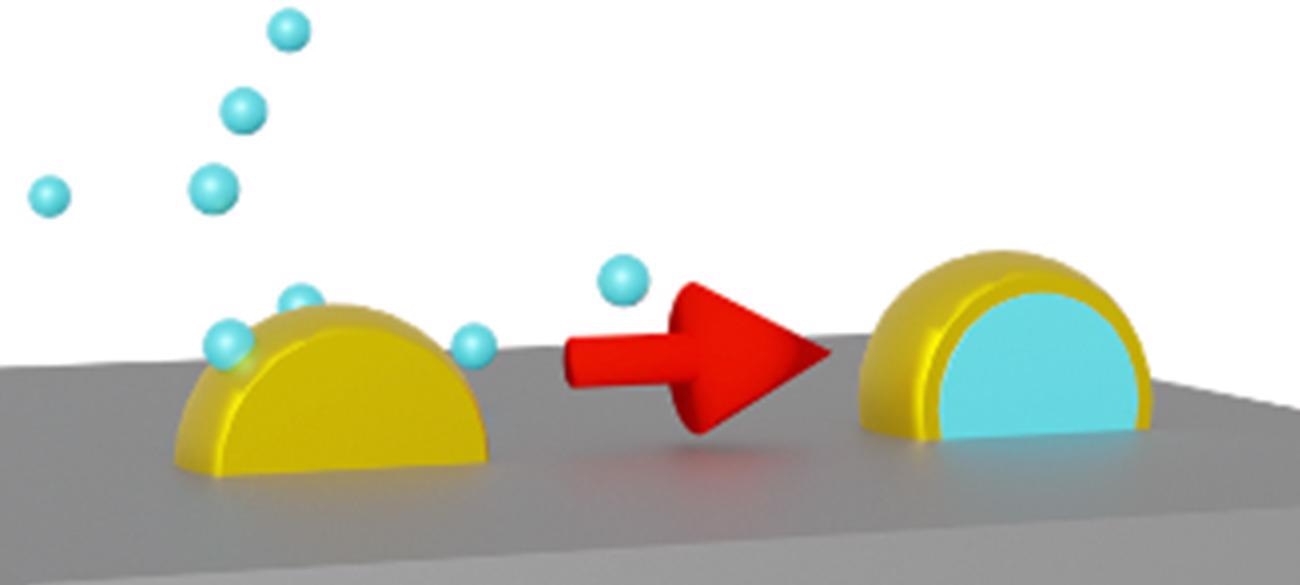Scientists from Osaka University reported a novel method for tracking the synthesis of core–shell bimetallic nanoparticles.

Image Credit: Osaka University.
As the high surface area of nanoparticles in comparison to their volume offers them intriguing properties, they are crucial in several disciplines. Therefore, the constant design of analytical techniques for nanoparticles is essential.
A way of defining the creation of a specific type of metal nanoparticles in real-time has been reported by scientists from Osaka University. The results of this study are published in the journal Physical Review B.
Core–shell nanoparticles contain one kind of material covered inside another and provide features that are not available using just one material.
When the materials are metals, and when one is deposited over the other, some metallic features — such as the surface energy and the atom size — mean that they should assemble with a specific metal as the shell. But the result is not always what is anticipated and can change based on the experimental methodology in practice.
As they provide insight into what has occurred in the formation process, methods for examining core–shell nanomaterials are usually applied after synthesis. Therefore, the researchers designed an approach that enabled them to track the metal deposition and restructuring at room temperature in real-time.
Our technique is based on the idea that if the higher surface energy metal forms the shell, the surface area of the particle wants to minimize so it tightens the sphere. However, if there is interdiffusion of the metals, the structure of the core–shell particles is more dispersed. We therefore tracked the difference in particle shape using a piezoelectric resonator.
Nobutomo Nakamura, Study First Author and Associate Professor, Osaka University
The changes in shape were tracked by growing nanoparticles very close together on a substrate and monitoring the interparticle distance via the resistance.
If the electric field that is excited by the resonator led electrons to mobilize between particles spaced apart, then the resistance level was high as the flow was disturbed by the gaps. Yet, the resistance is decreased if the particles spread and touched — making a continuous path. This data was then used to understand what has occurred within the particles.
The system was utilized to examine three different combinations of two metals, which are deposited in both orders. It was discovered that the depositions can be tracked in real-time, and gold deposition followed by palladium remarkably resulted in interdiffusion, creating core–shell particles with a structure that was opposite to the deposition order.
Our technique offers the opportunity to fine-tune the preparation of bimetallic core–shell nanoparticles. This control is expected to lead to the custom design of nanomaterials for applications such as hydrogen sensing and sustainable processing.
Nobutomo Nakamura, Study First Author and Associate Professor, Osaka University
Journal Reference:
Nakamura, N., et al. (2022) Restructuring in bimetallic core-shell nanoparticles: Real-time observation. Physical Review B. doi.org/10.1103/PhysRevB.105.125401.